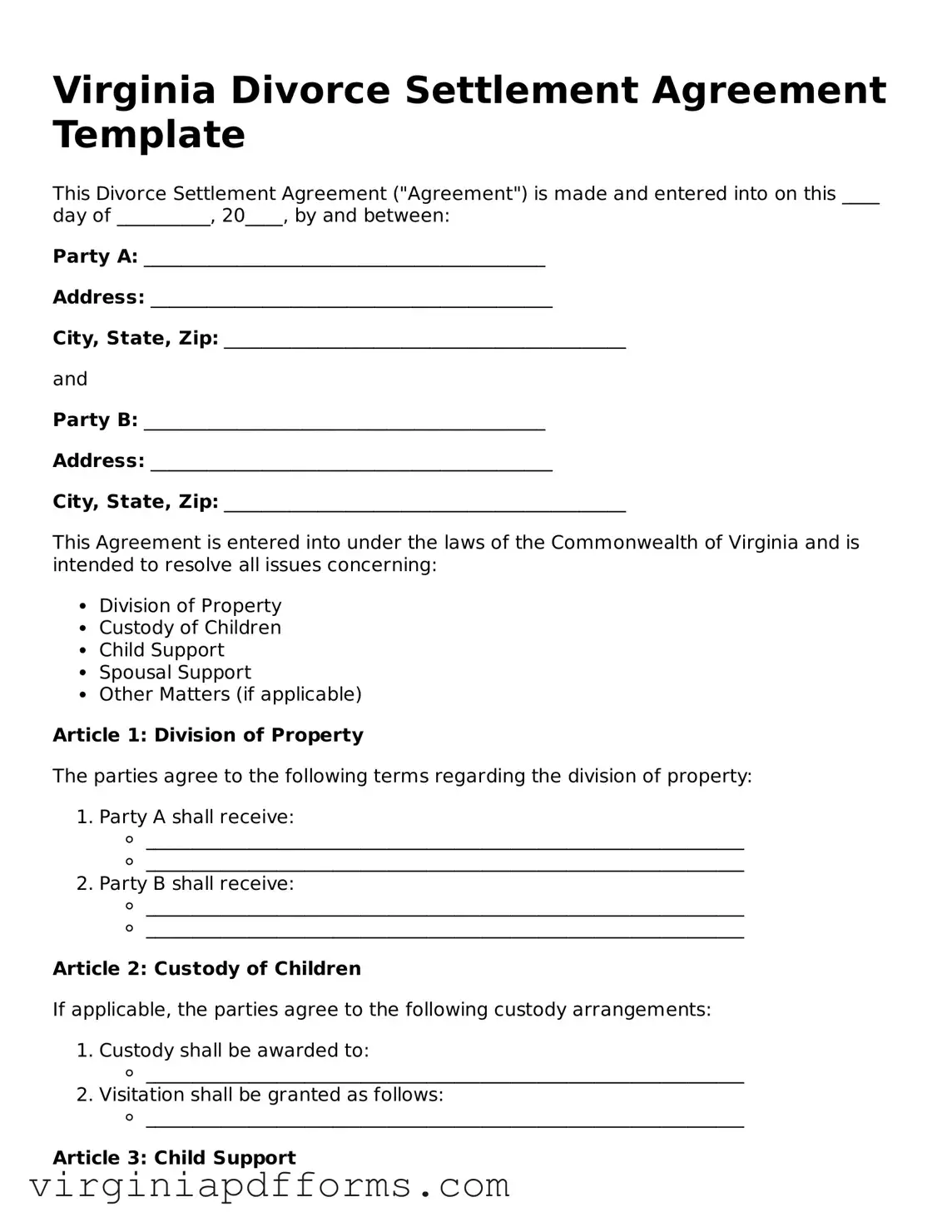Attorney-Approved Virginia Divorce Settlement Agreement Document
The Virginia Divorce Settlement Agreement form is a legal document that outlines the terms and conditions agreed upon by both parties during a divorce. This form addresses various aspects such as property division, child custody, and spousal support. Completing this agreement is a crucial step in finalizing the divorce process, ensuring that both individuals have a clear understanding of their rights and responsibilities moving forward.
Access My Document Now
